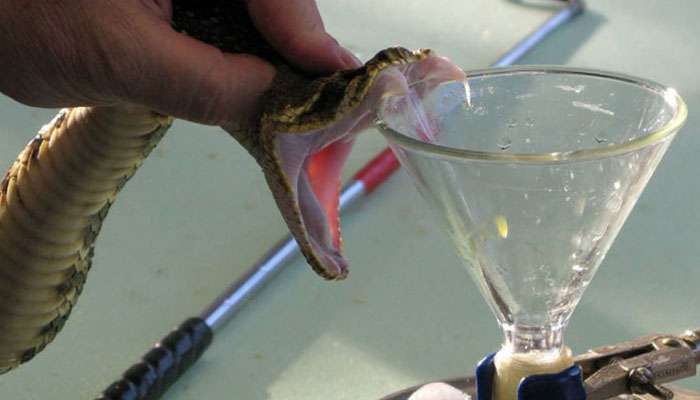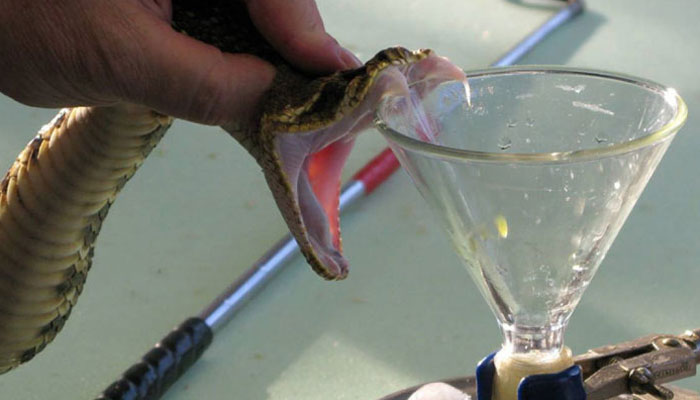
Snake venom consists of proteins, enzymes and other bioactive molecules that the snake injects into the body of its victim when it bites. These components on the other hand are being used as a special model for scientific research for various diseases and new discoveries. Similarly, researchers have used snake venom to elicit the toxicity of various compounds on animals. Such studies involve exposing animals to different doses of a compound and observing the effects on the animals over time.
The purpose of these studies is to determine the toxicity of the compound and to identify potential adverse effects that may be harmful to humans or other animals. In toxicology studies, animals are given different doses of a compound or poison or these doses are injected into the animal’s body, then the effects are observed over time. Among them, the most commonly used animal model is the laboratory rat. Because mice are mammals, they share many genetic and functional similarities with humans. They are relatively easy to breed and maintain in the laboratory compared to larger animals. Mice are also used to study the effects of snake venom and observe potential harmful effects.
Pesticides or other compounds can also be studied in the same way. When the pesticide was administered to rats, it was observed that the levels of certain enzymes in the blood of the rats changed, which indicated that this pesticide was extremely harmful to the liver. In addition to rats, rabbits are also used in these studies. Snake venom has been studied in the laboratory on these organisms. Similarly, the effects of various snake venoms have been tested and the most harmful effect is connoted. In this way, snake venom has been divided into two major categories, either snake venom damages the nervous system or the blood system and cardiovascular system.
Snake venom contains many proteins and bioactive molecules. Therefore, taking it as a standard, the toxic effects of other compounds can also be tested. This is the reason why the interaction of different drugs and compounds can be understood by targeting specific protein molecules in the human body, because these effects are shown in laboratory animals and then concluded by observing their blood and other organs. Experiments like these are crucial in developing effective treatments for snakebite, as animal experiments provide a better understanding of how snake venom affects the body.
Animal models allow researchers to study the effects of snake venom in a controlled setting where all changes can be observed. Thus, these animal models are also important in testing potential antidotes or treatments before they are used in humans. One view is that the use of animals in research is not appropriate and that alternative methods such as test tube methods or computer simulations should be used instead.
On the other hand, animal experiments provide very useful information. It is also worth noting that experimental animal testing can be a complex issue, as animals are used for a wide range of purposes in research and the rules governing animal use may differ for each experiment.
The basic principle is that research work should be carried out with the least possible harm to the laboratory animals used in the experiments and that all tests should be carried out in accordance with internationally agreed standards. Although animal testing is still used in many areas of research, efforts are underway to develop alternative methods that reduce or eliminate the use of animals. These methods can be less costly and more scientifically accurate. The “drow so flammelanoga ster”, commonly known as the fruit fly or fruit fly, is a small species of fly that has been used as a medium in scientific research for more than a century.
The drow fly is an important model organism for several reasons, as it can be easily grown in the laboratory at very low cost. It takes only ten to twelve days to hatch from an egg into a fly, and its genetic make-up is very simple. What most fascinates researchers is the ability to study multiple species of flies within the same organism in a short period of time. Thus it becomes possible to study the effects of environmental factors such as temperature, diet and other factors.
This fly has been used to study many biological processes. In one example of a study that tested venom on the drow sow flea, when different doses of scorpion venom were given to the drow sow flea larvae, the larvae’s ability to move was affected and it was observed that the normal crawling behavior of the larvae was disrupted and the larvae became paralysed. These bees can usually be placed in a small glass tube on a paste made of sugar, yeast and corn for easy growth where they also lay eggs and after the eggs turn into larvae, they turn from larva to fly.
Usually an experimental compound or poison can be added to this paste. Large populations of bees can be maintained in these small jars. Another study used Dro So Flaco to study spider venom. The researchers observed that spider venom induced changes in genetic material involved in stress response and immune function in the bees. These examples show that these flies can be used to observe the effects of poisons. If we use Dro So Phila to test for snake venom, it can have many benefits. For example, the genetic make-up of the Dro-su-Fla is fully known.
It is therefore not easy to manipulate, so if the effects of snake venom on a specific genetic material or to observe a biological function are tested on these flies, it can be done very easily, cheaply and in many ways better than other animals. Second, it is very difficult to perform any experiment on hundreds of mice. While large numbers of Drosophila flies can be grown in small vials and are feasible if a large number of experiments, i.e. hundreds, are to be performed, it is also possible that these hundreds of flies can fit into a small space in the laboratory and be easily manipulated.
They also have a short lifespan, making it not difficult to observe the effects of the poison over time. Most importantly, the basic biological processes studied in Drosophila are the same as in other organisms, including humans. This means that the experimental results obtained from the Dro So Fla can be applied to humans and other organisms. Therefore, using this fly as an animal model for snake venom tests can provide valuable information on toxic effects. Thus, this small fly can serve as an alternative experimental organism. Testing the effects of poisons or various compounds with the help of computer simulations or artificial intelligence is still quite advanced.
For this, it is necessary to have a lot of data or material in advance and then obviously that material or data is also taken for experimenting on animals. Any computer system can take all this material and create a database through a software to give a virtual result. Sometimes the results of such computers also have to be tested through experiments in the laboratory. As for getting results from computers through artificial intelligence, the field itself is still in its experimental stages and it would be too early to say anything.
Currently, snake venom is another compound. If we want to know about its effects, then we need an organic body that exists in the form of animals such as rats, etc. On the other hand, due to lack of space, low cost and large-scale experiments on an organism, in this case, there is Drosophila or fruit fly, which has been used for more than a hundred years in various institutions around the world for the study of biological factors. Over time it has been proven that this little bee can be used for almost any kind of laboratory experiment.
The Dow College of Biotechnology has a laboratory called the FlyLab that is working on the drow souffla. Snake venom is also being worked with these flies and Proteomics Center, University of Karachi is also working in collaboration with Fly Lab in such a project. In the future, it is possible that computers or artificial intelligence will replace laboratory animals. Until then, small organisms such as fruit flies are highly subject to experimentation as a better alternative.
setTimeout(function(){
!function(f,b,e,v,n,t,s)
{if(f.fbq)return;n=f.fbq=function(){n.callMethod?
n.callMethod.apply(n,arguments):n.queue.push(arguments)};
if(!f._fbq)f._fbq=n;n.push=n;n.loaded=!0;n.version=’2.0′;
n.queue=[];t=b.createElement(e);t.async=!0;
t.src=v;s=b.getElementsByTagName(e)[0];
s.parentNode.insertBefore(t,s)}(window,document,’script’,
‘https://connect.facebook.net/en_US/fbevents.js’);
fbq(‘init’, ‘836181349842357’);
fbq(‘track’, ‘PageView’);
}, 6000);
/*setTimeout(function(){
(function (d, s, id) {
var js, fjs = d.getElementsByTagName(s)[0];
if (d.getElementById(id)) return;
js = d.createElement(s);
js.id = id;
js.src = “//connect.facebook.net/en_US/sdk.js#xfbml=1&version=v2.11&appId=580305968816694”;
fjs.parentNode.insertBefore(js, fjs);
}(document, ‘script’, ‘facebook-jssdk’));
}, 4000);*/



